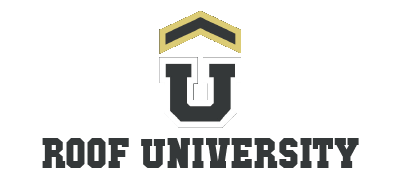Plumbing penetrations are points where pipes pass through a roof to allow for proper ventilation or drainage in plumbing systems. These penetrations are essential for maintaining a home’s functionality, but they also create potential vulnerabilities in the roof structure. Proper installation, sealing, and maintenance of plumbing penetrations are critical to prevent leaks and ensure the roof’s longevity.
What are Plumbing Penetrations?
Plumbing penetrations typically involve vent pipes that extend from the roof to facilitate the release of sewer gases and maintain water flow in drains. These pipes are often made of PVC, cast iron, or copper and require careful sealing where they pass through the roof to prevent water infiltration.
Common Types of Plumbing Roof Penetrations
- Vent Pipes:
- Allow sewer gases to escape safely and equalize pressure in plumbing systems.
- Usually capped with protective covers to prevent debris from entering.
- Drainage Pipes:
- Found on some roofs to manage rainwater flow.
- Typically used in flat or low-slope roof designs.
- Specialized Plumbing Lines:
- Include connections for water heaters or other plumbing-related equipment.
Challenges with Plumbing Penetrations
Roof penetrations for plumbing create openings in the roofing materials, which can lead to several issues:
- Water Leaks: Poorly sealed or damaged penetrations allow water to seep into the roof deck.
- Thermal Expansion: Pipes expand and contract with temperature changes, stressing seals and flashing.
- Weather Damage: Rain, snow, and UV exposure can degrade the materials surrounding plumbing penetrations.
- Debris Accumulation: Leaves and other debris can block vent openings, reducing their effectiveness.
Key Components for Plumbing Penetrations
- Pipe Boots:
- Flexible, cone-shaped components made of rubber or silicone that fit snugly around pipes to create a watertight seal.
- Often combined with a metal base that integrates with the roofing material.
- Flashing:
- Metal or synthetic sheets installed around the base of the pipe to redirect water away from the penetration.
- Works with pipe boots to provide comprehensive protection.
- Sealants:
- High-quality, weather-resistant caulking or adhesives used to reinforce flashing and fill gaps.
- Vent Caps:
- Protective covers placed on top of plumbing vents to prevent debris or animals from entering.
Installation Best Practices
- Proper Sizing: Pipe boots and flashing should match the pipe diameter for a secure fit.
- Layered Sealing: Flashing and roofing materials must be layered to ensure water flows over, not under, the roofing components.
- Secure Fastening: Fasten flashing and boots firmly to the roof deck to prevent movement.
- Durable Materials: Use materials resistant to UV rays, moisture, and temperature fluctuations to ensure long-term performance.
Maintenance and Inspection Tips
- Inspect Regularly: Check plumbing penetrations for cracked boots, loose flashing, or degraded sealant, especially after storms.
- Clear Debris: Remove leaves, dirt, or snow around plumbing vents to maintain clear airways.
- Reapply Sealant: Refresh caulking around plumbing penetrations as needed to maintain a watertight seal.
- Replace Worn Components: Address worn or damaged pipe boots, flashing, or vent caps promptly to avoid leaks.
- Monitor Vent Caps: Ensure vent caps are secure and free of blockages to maintain proper airflow.
Signs of Problems with Plumbing Penetrations
- Water Stains: Discoloration on ceilings or walls near plumbing vents may indicate a leak.
- Dripping Water: Active leaks around pipes during or after rain suggest compromised seals.
- Rust or Corrosion: Metal flashing or vent caps may degrade over time, reducing effectiveness.
- Odors: Sewer smells inside the home can indicate blocked or improperly sealed plumbing vents.
Why Proper Plumbing Penetrations Matter
Plumbing penetrations are essential for a home’s plumbing system, but they must be carefully installed and maintained to protect the roof. By addressing these areas proactively, homeowners and roofing professionals can prevent water damage, improve system performance, and ensure the roof’s long-term durability.
